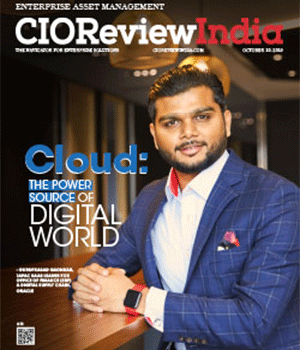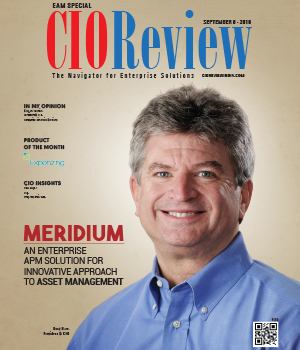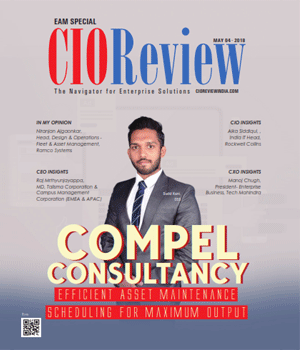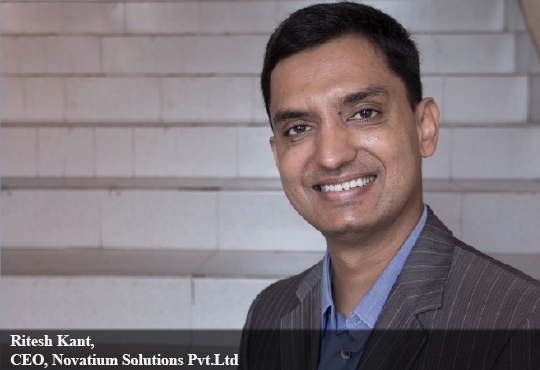
End of Fat PC Computing - Beginning of the Thin Client Computing!
KRC Murty, VP & CTO, Deutsche Bank Ag.
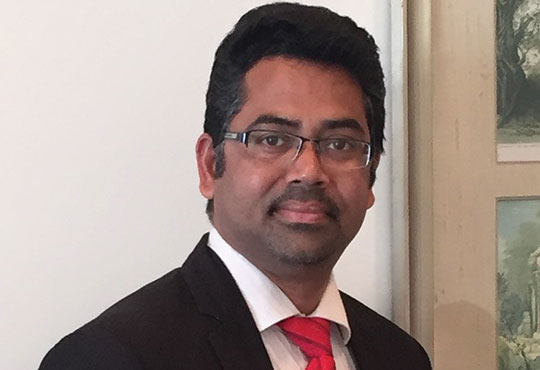 The way IT used to run the Desktop landscape is changing rapidly. Today’s end user is also a very learned individual unlike the earlier decades. So what is that is really changed the entire landscape of the end user experience at work?
The way IT used to run the Desktop landscape is changing rapidly. Today’s end user is also a very learned individual unlike the earlier decades. So what is that is really changed the entire landscape of the end user experience at work?
The desktops and Laptops are becoming extinct. The desks have made way to Thin Clients and Ultra-Thin displays. This gets rid of the bulky Workstations / Desktops and need to carry laptops by the user to and fro. Now what does the organization get out of this?
Ease of use: Thin client computing enables increased productivity, provides a facility for employees to work from anywhere and anytime. They can get an instant access their personal desktop from a fat client or Smart Pads and Phones providing the ease of use to work from home or anywhere.
Organizations are reaping the benefits, namely, reporting huge cost savings, as well increases in reliability, negligible downtime and productivity. Thin clients are proven to be more reliable and easier to manage than the traditional fat clients.
Reduced administration and End User Support: Since this Thin clients setup is so easy to deploy so is the management. The desktop infra is deployed centrally and only has only an emulation at the end user screen.
Free Seating and User Movements: Organizations can embark on the Free Seating model where any user can sit anywhere and work. The concept of a fixed desk is moving away and making way for this new concept saving huge amounts of costs. Once all the workstations are deployed with Thin clients it does not matter the number of user moves which is requested by the respective Business units or any other departments within the organization. Users can simply log-off and log-in to the new thin client and start using it right away.
Save on Administrative Costs: Central deployment in turn needs a single point of administration which reduces overall administration costs and saves on maintenance time. The central team can perform upgrades, deploy patches, applications and virus updates solely on the terminal servers for the entire spread of infrastructure in one single go. The Desk Side support team can be eliminated since there is no requirement to attend for such operations. Use of the Centralized Service Desk can be explored for better operations and returns to the organization.
Longevity: Reliability of Thin client devices is much higher than a traditional Desktop Infrastructure. According to a research report, the average thin client MTBF is about 175,000 hours, compared to 25,000 hours for PCs.
Enhanced Security: Since the thin client does not generally have the interface or access provided for external device access viz., USB or a CDs / DVD’s etc, the chances of inheriting Virus and Malware is very remote. This also eliminates the risk of data theft since all the data is stored on the central infrastructure.
Recovery Made Easy and DR: Since the clients do not hold any data, it is easier to retrieve any data from the central system. The organization need not dedicate a separate infrastructure for the user at the BCM sites.
Reduced Energy Consumption: One of major cost-saving would come from saving the Power due to this model of deployment. Loads of units are saved since unlike PC’s or Laptops which required to be kept running and ON 24*7 for the critical patches to be run and antivirus and other application-related updates to be run on them. Since thin clients are dumb and they don’t need to be kept switched ON, it saves lots of power. Even in the usual running mode, the thin client consumes quite less power which is one-third of a traditional desktop and generates very less heat. This, in turn, reduces the requirement of Air-conditioning system to be toned down. Thus the organizations, in turn, contribute to reducing the Carbon Foot Print and being Environment-Friendly.
Cost saves on Infra and Reduced Foot Print: These models save lot of space since Thin client devices are usually smaller than PCs – typically this resembles a Set-Top Box or size of an external modem. Easy to replace, centralized license management, the extended lifespan of almost 5-6 years compared to a PC which is typically around 3-4 years.
Regulatory and Risk Cover: Since the Thin Clients do not hold any data and they are not called as data-bearing devices, the regulatory risk and challenge of safeguarding the end user infrastructure is eliminated. Risk of losing the asset viz., Laptop or Leakage of Hard Disk by chance and data stolen is completely eliminated and the risk covered.
Conclusion: The above model of deployment enables to create a dynamic and flexible IT environment with thin clients. The CTO teams will simplify the IT setup and make it a healthier spread of infrastructure setup.
CIO Viewpoint
Why Foolproof Facial Recognition Is Key Against...
By Joseph Sudheer Thumma, Global CEO & MD, Magellanic Cloud
National Technology Day 2025: Powering Progress...
By CIOTech Outlook Team
Aligning IT Roadmap with Business Objectives: A...
By Subhash singh Punjabi, CISO & Head Enterprise Architecture, Deepak Fertilisers & Petrochemicals Corporation Ltd
CXO Insights
Cloud: The Power Source Of Digital World
By Guruprasad Gaonkar, JAPAC SaaS Leader for Office of Finance (ERP) & Digital Supply Chain, Oracle
By Girish Sharma, Head - Information Systems at Serdia Pharmaceuticals (India) Pvt Ltd
Digital Tech And Digital Transformation - And...


